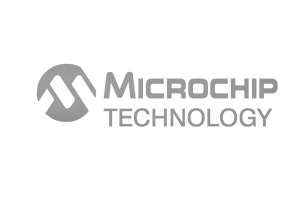ATMEGA256RFR2-ZFR Overview
The ATMEGA256RFR2-ZFR is a high-performance 8-bit microcontroller with an integrated 2.4 GHz transceiver, designed for wireless communication applications. It combines a robust AVR CPU core with low-power consumption and a comprehensive set of peripherals, making it ideal for embedded systems requiring reliable RF connectivity. This device supports advanced wireless protocols and offers flexible memory options, enabling efficient development of IoT and industrial automation solutions. Available from Produttore di circuiti integrati, it delivers a balanced combination of processing power and RF capabilities for demanding environments.
ATMEGA256RFR2-ZFR Technical Specifications
| Parametro | Specifiche |
|---|---|
| Core Architecture | 8-bit AVR RISC |
| Frequenza operativa | Up to 16 MHz |
| Memoria flash | 256 KB |
| SRAM | 32 KB |
| EEPROM | 4 KB |
| Tensione di esercizio | 1.8V to 3.6V |
| RF Transceiver Frequency | 2.4 GHz ISM Band |
| Velocità dei dati | Up to 2 Mbps |
| Tipo di confezione | 64-pin QFN |
| Consumo di energia | Low power modes supported |
ATMEGA256RFR2-ZFR Key Features
- Integrated 2.4 GHz RF transceiver: Enables seamless wireless communication without the need for external RF modules, reducing system complexity and cost.
- 256 KB Flash memory: Provides ample storage for complex firmware and wireless protocol stacks, supporting advanced applications.
- Low power consumption modes: Optimizes battery life in portable and IoT devices by minimizing energy use during idle periods.
- High-performance 8-bit AVR core: Delivers efficient processing suitable for real-time control and sensor data management in embedded systems.
- Wide operating voltage range (1.8V to 3.6V): Offers flexibility to operate in various power environments and supports battery-powered applications.
- Ricco set di periferiche: Includes timers, ADC, USART, SPI, and I2C interfaces for versatile connectivity and control options.
- Compact 64-pin QFN package: Facilitates integration into space-constrained designs while supporting extensive I/O capabilities.
ATMEGA256RFR2-ZFR Advantages vs Typical Alternatives
This microcontroller stands out by integrating a high-quality 2.4 GHz RF transceiver directly on-chip, which reduces the overall system footprint compared to solutions requiring separate RF modules. Its low power consumption modes and extensive memory resources provide a reliable platform for wireless embedded applications. The device??s flexibility in operating voltage and rich peripheral set further enhance its suitability over typical alternatives, delivering efficient, accurate, and cost-effective wireless control solutions.
🔥 Prodotti più venduti

IC caricabatterie lineare BQ24075 di Texas Instruments - Pacchetto QFN da 5 x 4 mm

Modulo sensore di corrente INA219 di Texas Instruments - Pacchetto SOIC, monitoraggio di precisione

Riferimento di tensione di precisione LM4041 di Texas Instruments - Pacchetto SOT-23

Amplificatore operazionale audio OPA2134 di Texas Instruments - Doppio, ad alte prestazioni, pacchetto SOIC-8
Applicazioni tipiche
- Wireless sensor networks: Facilitates data collection and monitoring in industrial or environmental monitoring systems with reliable RF communication and low power usage.
- Home automation: Supports smart devices and controls for lighting, security, and HVAC systems requiring integrated wireless connectivity.
- Internet of Things (IoT) devices: Enables seamless connectivity for various IoT applications, including asset tracking and remote monitoring.
- Industrial automation: Provides robust wireless communication and control capabilities for factory automation and process control systems.
ATMEGA256RFR2-ZFR Brand Info
Produced by a leading semiconductor manufacturer, this microcontroller belongs to a family well-known for combining AVR CPU cores with integrated RF transceivers. The product is designed to meet the demands of the wireless embedded market, offering developers a reliable, scalable, and power-efficient solution. Its proven architecture and extensive support resources make it a preferred choice for engineers working on next-generation wireless applications.
FAQ
What wireless protocols does this microcontroller support?
The device??s integrated 2.4 GHz transceiver supports common ISM band wireless protocols including IEEE 802.15.4, enabling compatibility with ZigBee, 6LoWPAN, and other low-power mesh networking standards used in IoT and industrial applications.
🌟 Prodotti in evidenza

"Acquista il comparatore di tensione di precisione MAX9312ECJ+ in contenitore DIP per prestazioni affidabili".

QCC-711-1-MQFN48C-TR-03-1 Bluetooth Audio SoC with MQFN48C Package

Modello 0339-671-TLM-E - Pacchetto TLM-E ad alte prestazioni per funzionalità avanzate

1-1415898-4 Alloggiamento connettore, filo elettrico-scheda, presa, confezionato
How does the low power mode improve battery life?
Low power modes reduce current consumption significantly when the microcontroller is idle or in sleep states. This allows battery-powered devices to operate for extended periods by minimizing energy use during inactivity while quickly waking up to perform tasks.
What package options are available for this device?
The microcontroller is available in a compact 64-pin QFN package, which offers a small footprint suitable for dense PCB layouts while providing sufficient pins for extensive peripheral connectivity.
📩 Contattaci
Can the microcontroller operate at different voltage levels?
Yes, it supports an operating voltage range from 1.8V to 3.6V, allowing flexible integration with various power supplies and enabling use in both battery-powered and line-powered applications.
What kind of development support is available for this device?
Comprehensive development tools and software libraries are offered, including support for wireless protocol stacks and AVR programming environments. This facilitates rapid prototyping, debugging, and deployment of wireless embedded systems.





